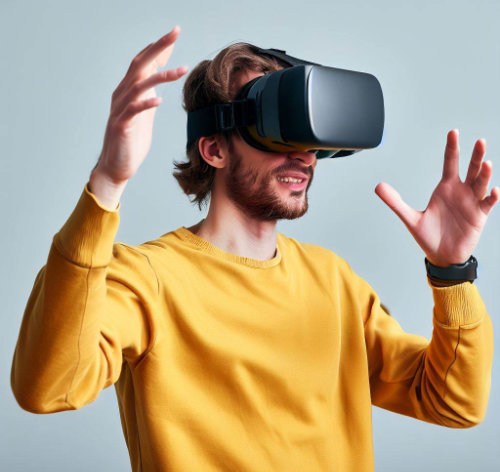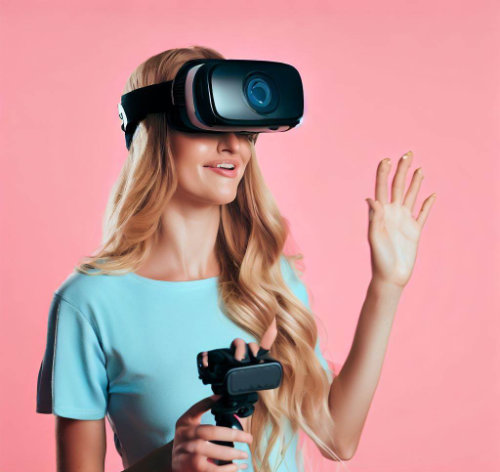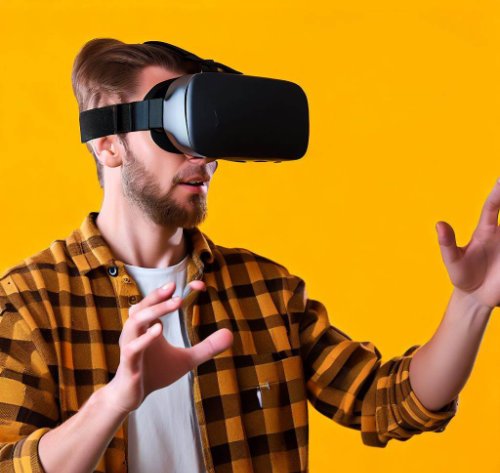How to Create 3D VR Video: An Immersive Experience
- This article discusses the process of creating 3D Virtual Reality (VR) videos, a rising technology that offers immersive experiences by combining the physical and digital world.
- We began by understanding the concept of 3D VR videos, exploring their magic, and reasons to use them, particularly for web design agencies.
- Step 1: Crafting the concept is vital, as it sets the stage for the rest of the process. The concept should be engaging and appropriate for the target audience.
- Step 2: The article highlighted the importance of preparing the right tools and technologies, including VR platforms, VR camera equipment, and 3D modeling software.
- Step 3: We moved on to storyboarding and scene setting. The storyboard visually represents the VR video sequence, and scene setting involves creating the environment for the video.
- Step 4: The production phase involved filming with a VR camera or creating a 3D environment using modeling software.
- Step 5: Post-production and editing involve stitching the video footage, adding effects, and refining the final output. Detailed and realistic models are crucial for 3D environments.
- Step 6: The final step was testing and publishing the 3D VR video. Testing is vital for ensuring a smooth viewer experience, and the video can be published on various platforms once it's refined.
- The article concluded by emphasizing the importance of human creativity in the rapidly evolving digital world and the transformative power of 3D animations in sectors like construction.
- Overall, the article provided a comprehensive guide on how to create 3D VR videos, offering practical insights and resources for each step of the process.
In the rapidly evolving digital landscape, one technology has been making waves in the last decade, steadily becoming a major game changer for industries far and wide. 3D Virtual Reality (VR) is transforming the way we create, interact, and experience content, pushing boundaries and opening new vistas of possibilities. In this post, we explore how to create a 3D VR video, a compelling medium that merges the physical and digital world to deliver an unparalleled immersive experience.
Understanding The Magic of 3D VR Video
Before we delve into the nuts and bolts of creating 3D VR videos, it's vital to have a clear grasp of what this technology entails and why it's becoming increasingly important.

At its core, VR is a simulated experience that can be similar to or completely different from the real world. 3D VR video amplifies this experience by adding a depth dimension to the mix. It gives viewers a sense of depth and scale, making them feel as if they are 'inside' the video, hence the term immersive.
As Techopedia explains:
"Virtual reality is the term used to describe a three-dimensional, computer-generated environment which can be explored and interacted with by a person."
Why Use 3D VR Video?
3D VR videos are not just visually stunning; they provide utility in a myriad of fields. Whether it's the architecture industry using 3D VR for walkthroughs of unbuilt spaces or the entertainment industry creating compelling narratives that engage viewers like never before, the power of 3D VR is undeniable.
Notably, they offer a significant advantage for web design agencies. As we discussed in a previous post, web design agencies often face the challenge of standing out in a sea of similar offerings. 3D VR video offers a unique opportunity to transform your website into a dynamic, interactive, and engaging space that leaves a lasting impression on visitors.
According to Forbes, VR can increase engagement levels and strengthen customer relationships by creating a more memorable experience.
Step 1: Crafting The Concept
Creating a 3D VR video begins with a clear and compelling concept. This is a crucial step in the web development process, as it forms the foundation for all subsequent stages.
The concept should take into account the target audience, the message you want to convey, and the best way to deliver that message. Whether you're creating a walkthrough for an architectural project or developing a VR experience for a brand promotion, the concept should be designed to captivate and engage your audience in the most effective way.
Stay tuned for more on creating engaging 3D VR videos in the next sections of our post. We'll cover planning, execution, and post-production processes that can take your 3D VR video from idea to reality, creating an engaging and immersive experience for your viewers.✨
Step 2: Preparing the Right Tools and Technologies
Before diving into production, you must have the right web development technologies in place. This involves selecting the right VR platform (such as Unity or Unreal Engine), VR camera equipment, and 3D modeling software.
Remember, the choice of tools will significantly influence the quality of the final output. In our web development history, we've seen how the right tools can make a world of difference in the final product.
For instance, for creating high-quality 3D models, tools like Blender, 3ds Max, or Maya can be used. On the other hand, for VR video production, professional VR cameras like the Insta360 Pro or GoPro Omni can be beneficial.
A great place to start learning about 3D modeling is Blender Guru, which offers tutorials for creating 3D models.
Step 3: Storyboarding and Scene Setting
Once the concept is clear and the right tools are in place, the next step is to visualize the concept through a storyboard. A storyboard serves as a visual representation of the VR video sequence and helps plan out the progression of the story.
The scene-setting is another important aspect. It involves creating the environment where the video will take place. For instance, if you are creating a 3D house tour, you need to accurately model and texture the house interiors.
Step 4: Filming and Creating the 3D Environment
After planning, it's time to move into the production phase. Depending on the content, this could involve filming with a VR camera or creating a 3D environment using modeling software.
If you're filming, ensure that the camera is at a stable and optimal height to give the viewers the most natural perspective. When creating a 3D environment, detailed and realistic models are key. Check out our previous post for some inspiration on 3D modeling.
In the next part of this article, we will delve deeper into the post-production process, which involves editing and rendering your 3D VR video to create the final output.
Step 5: Post-production and Editing
The post-production process involves stitching the video footage, adding effects, and refining the final output. Tools like Adobe Premiere Pro or After Effects can be used for editing the VR video and adding special effects.
During this process, it's important to maintain the 360° perspective while editing. Remember, the goal is to create an immersive experience for your viewers, which means all edits must maintain a natural and smooth flow.
In case of 3D models, you'll need to use rendering software to create realistic lighting and textures. This process can often be time-consuming, but it's crucial for bringing your 3D environment to life.
Step 6: Testing and Publishing

Before your 3D VR video goes live, it's crucial to conduct rigorous testing. This ensures that your video delivers the intended experience across various VR platforms. Furthermore, testing can help identify any errors or glitches that may disrupt the viewer's experience.
Once your 3D VR video has been tested and refined, it's ready to be shared with the world. From WordPress-based websites to dedicated VR platforms, there are several avenues where you can publish your masterpiece.
Remember, as we shared in a previous article, while tools and technologies are rapidly evolving, there's still a significant need for human creativity and intuition in content creation.
In Conclusion
Creating a 3D VR video is a complex process that involves several stages, from conceptualization and planning to production and post-production. However, the end result - an immersive and interactive experience that captivates your audience - is well worth the effort.
At TopVisual, we pride ourselves on being at the forefront of 3D animations and their power in construction. We hope this guide has given you some insights into the process of creating a 3D VR video. If you're looking to explore 3D VR for your business or project, feel free to reach out to our team.
Remember, the digital world is always evolving, and staying ahead requires continual learning and adaptation. Keep exploring, keep learning, and keep creating.
Blog Author: Marek Eller
Post Date: July 5, 2023
Categories: 3D Virtual Websites

